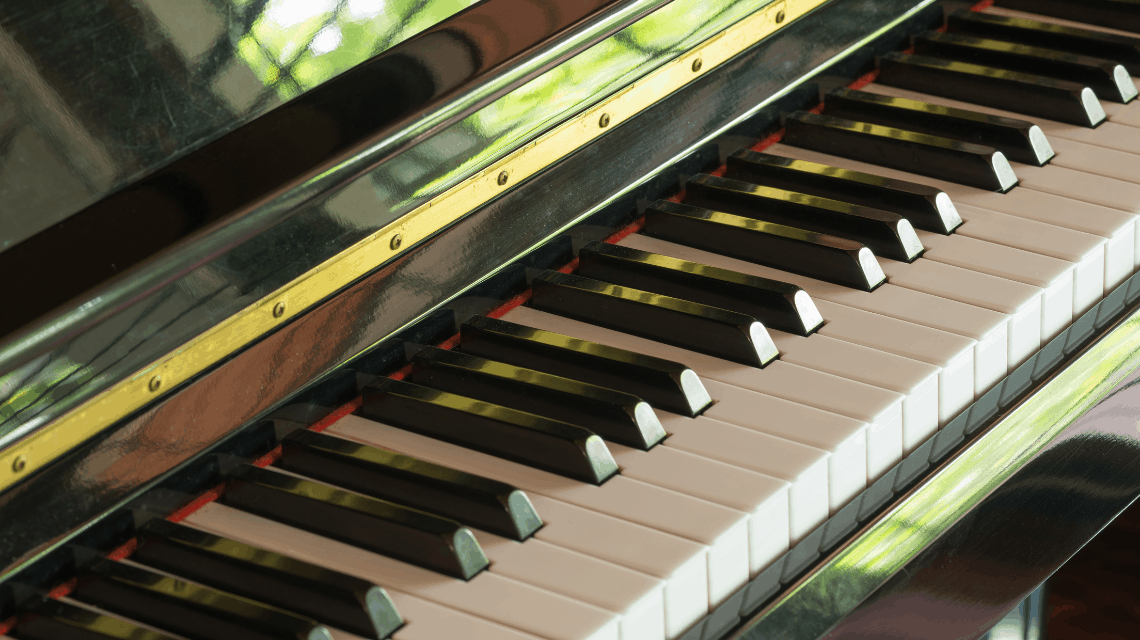Pianists: Are You An Auditory Or Visual Learner?

Most people can easily identify as either being an auditory or a visual learner. Every once in a while, someone is a pretty equal balance of both, but most people can relate strongly to either learning well with their eyes or their ears.
This is an interesting topic to think about in terms of learning the piano. Playing the piano is pretty equally an auditory and a visual activity. However, the 2 different types of learners will go about learning the piano in 2 completely different ways.
In each case, there are specific skills or gifts that you probably have that make learning the piano easy. At the same time, you probably come up against certain challenges that don’t come easily to you.
Let’s look at how visual and auditory learners each approach the piano, then let’s explore what we can learn from each other.
How Auditory Learners Learn The Piano
Auditory learners naturally have a good internal sense of music. They can hear music in their minds. They can break apart and sort out the sounds in that music at the piano.
Auditory learners can easily pick out melodies and harmonies on the piano based on what sounds right. They don’t need to know note names or understand how chords work; they can just tell that the music they are creating matches the music that they hear.
Auditory learners learn quickly from YouTube videos or hearing other pianists perform. They enjoy taking on the challenge of going to the piano to see if they can replicate what they just heard.
Oftentimes, auditory learners miss out on using proper technique in the early stages of learning the piano. Many of their first songs are self-taught so they don’t necessarily know the correct fingers to use or the best way to position their hands on the piano keys. It’s easy to form bad habits early on, so it’s important to work with a piano teacher to learn standard fingerings and form at the piano.
Learning from sheet music can be really frustrating to auditory learners for a number of reasons.
First, learning from a book for beginners might seem like backtracking when an auditory learner has already figured out more complex music by ear.
Most beginning piano methods were created with visual learners in mind. There is a heavy emphasis on reading notation and understanding music symbols. While this is important information, most auditory learners don’t find it to be the top priority.
Next, many piano arrangements are simplified. An auditory learner often hears the original version of a song or piece and they make it their goal to replicate the original version, no matter how complex it is.
This can be an exciting challenge to take on, but the original form of a lot of music can be very complicated both in terms of technical difficulty and complexity of the notation and theory.
A simplified arrangement might sound too watered down to an auditory learner, but the original may be out of reach.
Finally, sheet music might be a good reference tool for an auditory learner. However, auditory learners often feel disconnected from the written sheet so they are unlikely to follow along with it as they play. Many traditional piano lessons heavily emphasize reading from a sheet and auditory learners often struggle in this setting.
While there are some challenges to leaning heavily on the ear to learn the piano, it’s also a wonderful gift to be able to play music by ear.
Many auditory learners have a beautiful sense of musical expression and do an excellent job of tapping into the emotions that music conveys since they don’t have to rely on using the written page for interpretation.
How Visual Learners Learn The Piano
Visual learners are often baffled by how an auditory learner can sit down at the piano and magically create music, even without piano lessons.
While a visual learner can also figure out music independently on the piano, they are more likely to do so by remembering visual patterns on the piano keys, rather than by matching pitches to what they hear.
Unlike auditory learners, visual learners love to have a concrete, physical page with music notation to follow along with.
Visual learners often excel in and move quickly through piano method books because the information is usually organized neatly on the page, and there are a lot of visual patterns to observe within the notation.
Visual learners are likely to keep their books and sheet music well organized. They often make a lot of notes on the page and might use highlighters or sticky notes to add color to the music.
Visual learners might take a more “cerebral” approach to learning the piano. It’s not necessarily something that they internalize or that seems intuitive. However, they’re usually willing to put forth the effort and discipline to figure out how everything works and do it well.
Visual learners might freeze up if asked to play something by ear or to play without the safety net of their sheet music.
While visual and auditory learners each bring their own strengths to the piano, there is a lot to learn from each other.
What Auditory Learners Can Learn From Visual Learners
For auditory learners, it’s definitely an advantage to learn how to read music notation well. All types of learners will agree that learning to read music is definitely a long process that can take many years to master. Understanding this will help you stay motivated to continue the process, even when it feels slow.
Auditory learners will often find themselves figuring most of a song by ear, but it’s common that a few chords, notes or details will slip by them. In some contexts, this isn’t a big deal, but there are times when it’s important to learn music true to its original form. Understanding that sheet music is like a guide or road map to follow is a key part to learning music.
Sight reading is a really helpful skill for auditory learners to practice regularly. Practicing sight reading is different than practicing music at your skill level.
When you are sight reading, you’ll want to level down and practice reading music that is below your current level. The goal when sight reading is to observe and play every possible detail in the music. You want to focus on playing as precisely as possible as soon as possible. Instead of spending time repeating the music over and over again, you’ll want to try to nail it on the first or second attempt.
In order to do this, you’ll probably need to spend a few minutes studying the score before you begin playing. Pay close attention to the key signature, the time signature, the intervals of notes, tricky rhythms, fingering etc. You might be able to see the notation and imagine what the music will sound like. This will help you sight read successfully, but you have to be careful to stay focused on the page and not just play what sounds right.
What Visual Learners Can Learn From Auditory Learners
Sometimes it will never cross an auditory learner’s mind to spend much time listening to the music that they are learning. They can be so focused on the page that they forget that a recording of their music is just as valuable as the sheet music.
Visual learners should take the time to actively listen to their music and to practice making observations that they can put into practice. Ideally you’ll want to listen to both the expressive qualities of the music as well as logistical aspects such as chord changes, contour of the melody and rhythms.
You can listen while following along with your sheet music, but it can be just as helpful to listen outside of the context of the written sheet as well.
Ear training is an important skill for visual learners to master. Practicing ear training will help you discover unique qualities of specific sounds within intervals and scales. It will help you hear your music from a new perspective and understanding.
You could use an app or a specific program to drill different ear training skills. Another good way to practice ear training is to turn on music and see if you can make discoveries about your music on the piano. Can you find what key it is in? Can you find the melody notes? What are some harmonies used in the music? Are there specific intervals or chord progressions you can hear?
As you make discoveries about your own learning style on the piano, it’s important to understand that there isn’t one right or wrong way to learn the piano. Each person comes to the piano with a unique set of gifts, but each person will likely come across their own musical challenges as well.
There is never a reason to feel bad about the way that you learn the piano the easiest. But, of course, it’s always helpful to be willing to grow and work outside of your comfort zone.

